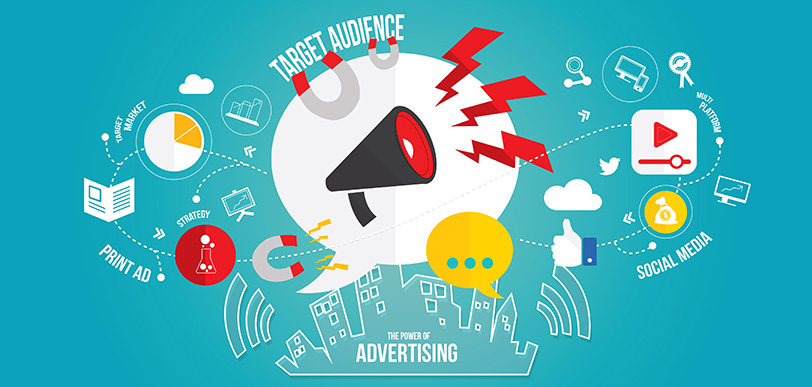You may have seen some of the less-than-inspiring statistics floating around about the purported failure rate of small businesses. It’s true — the world often feels like a hostile place for organizations that don’t already have an Apple-sized war chest or a global audience.
But failure isn’t an option, and it certainly isn’t a foregone conclusion. So what does it take to elevate your startup above the fray? How can you improve your conversion rate in a meaningful, measurable way? The answer is deceptively simple: marketing. A solid multichannel marketing campaign could make all the difference in the world. Here’s how.
1. Know What Metrics Are Worth Tracking
Don’t put the proverbial cart before the horse. Before you sink your teeth into a serious multichannel marketing campaign, you need to know which metrics are worth tracking — and how to track them in the first place. The goal here is to improve your conversion rate, remember? To determine if your efforts are paying off, you need a way to dig into the hard data.
One of the most powerful tools you have at your disposal when it comes to tracking conversion rates and other metrics is Google Analytics. If you don’t already have an Analytics dashboard up and running, now’s the time! But if you do have one, the next steps are reasonably straightforward.
You need to define what a successful conversion looks like. Maybe it’s having your visitors fill out a contact form or complete a purchase. Whatever you go with, make it a clear and measurable goal. And then, develop a CTA that encourages users to reach that goal.
Back in 2011, PBS found itself grappling with the opportunities and challenges of digital marketing. By leveraging Google Analytics, it was able to realize an impressive 30 percent rise in traffic. By setting up goals and funnels and defining “success,” PBS was able to secure its place as a forward-thinking media outlet.
2. Let Customers Interact With You How They Wish
We’re talking about multichannel marketing here, and that means we need to answer two simple questions: What constitutes “media channels” these days — and which ones are worth your time?
We’re way past TV and billboard ads. These days, companies can tweet, pin and poke their way to success, and can often spend far less in the bargain than they would have if they’d gone in a more traditional direction.
And social media outlets are far from the only option here. You might also consider building a mobile app, offering push notifications on phones and desktops, signing up with YouTube and/or Vevo for a series of original short videos and much, much more. The multimedia world is flush with opportunities, so reach out to your fans and followers for a better look at how they are interacting with you online. Then, leverage the channels that make the most sense for your followers.
Leave no stone unturned! Apple was a longtime holdout on Twitter, but after joined, it gathered more than half a million followers in less than a year. This is a big deal for conversion, because customers who know they can reach out to a company directly for support are much more likely to give that company their business.
3. Get Industry Influencers in Your Corner
Sometimes you don’t have to do it all yourself. You likely figured this out when you discovered the magic of delegation, but did you know you can also lean on others for your marketing efforts?
Think of this tactic as a bit of a kick-start for your marketing blitz. The fact is, you don’t need to start from scratch — there are already plenty of movers and shakers in your industry, or even in tangentially related ones, who you can reach out to. They already have a platform and an audience, and with the right incentives, they can bring word of your product or service to a much larger audience than you currently have.
A great example of this tactic is Marriott Hotels. In its efforts to build a comprehensive and worldwide audience, it reached out to well-known YouTubers for help creating unique and interesting video content. The results speak for themselves and prove that real magic can happen when you — for lack of a better word — outsource some of your marketing efforts.
4. Automate Where You Can
It’s time to embrace our robot overlords.
Multichannel marketing probably sounds like it requires a lot of heavy lifting — and it does. But that doesn’t mean you have to surrender to the tedium of the smaller, repetitive tasks it requires. These days, automation is making its way into nearly every facet of our lives, and that goes double for marketing.
Sending out pitch e-mails is probably not a new concept for you, but did you know you can send out batches of canned — but cleverly personalized — e-mails? Did you know you can schedule social media dispatches well in advance? Are you making the best use of posting calendars on WordPress, Medium or wherever else you publish written content regularly? If you answered “no” to any of these questions, it’s time to get moving.
5. Offer Value First, Self-Promotion Second
Shouting into the void about how great your product is might be one of the fastest ways to find yourself on somebody’s block list or in a spam folder. Everything about digital marketing is fundamentally self-promotional, but that doesn’t mean every dispatch you send out into the world needs to extol your company’s virtues constantly.
More than anything else, the modern consumer wants value delivered to them. That means knowledge. It means something of practical use. It means making them chuckle during their lunch break.
When you’re trying out different delivery mechanisms for multichannel marketing, keep this in mind and offer content that’s informational or enjoyable first and promotional second. Offer thought-provoking infographics that promote your company in a subtle way or film a behind-the-scenes video of your company’s inner workings to elicit a laugh.
Make them think or make them feel — that’s when the conversion magic really happens.
6. Remember to Say “Thank You”
Manners are essential, today more than ever. And for smaller, modern companies that want to stress the personal touch, this little humanistic flourish is doubly important.
No matter how you’re interacting with your customers, clients or partners, remember to thank them for playing a role in your continued success. Even if it’s just a pop-up to express gratitude for signing up for your newsletter, no gesture is too small.
Naturally, you can take it a step further and incentivize ongoing patronage by giving discounts or awards. Mobile accessory maker Anker has refined this into a science by offering loyalty rewards to customers who sign up to follow them. This builds reputation and good will and improves conversions by encouraging additional purchases.
Define Your Mission
As you can see, there are lots of moving parts in multichannel marketing — but you don’t have to succeed at every last one of them. Success in marketing means targeting only the channels that deliver value — so after your trial-and-error phase, you’ll likely emerge with clarity and a clear-cut mission. So what are you waiting for?
___
by Lexie Lu
source: SiteProNews


